“THE LITTLE CAJUN SAINT”
A Louisianan could become a saint
By Aron Boehle aboehle@my.loyno.edu
After decades of Catholic Louisianans’ attempts, Charlene Richard, a young Catholic Cajun girl born in Richard, La. in 1947, might have the opportunity to become an official saint in the Vatican. Her story has inspired many Catholics in New Orleans and bolstered their faith, according to Alicia
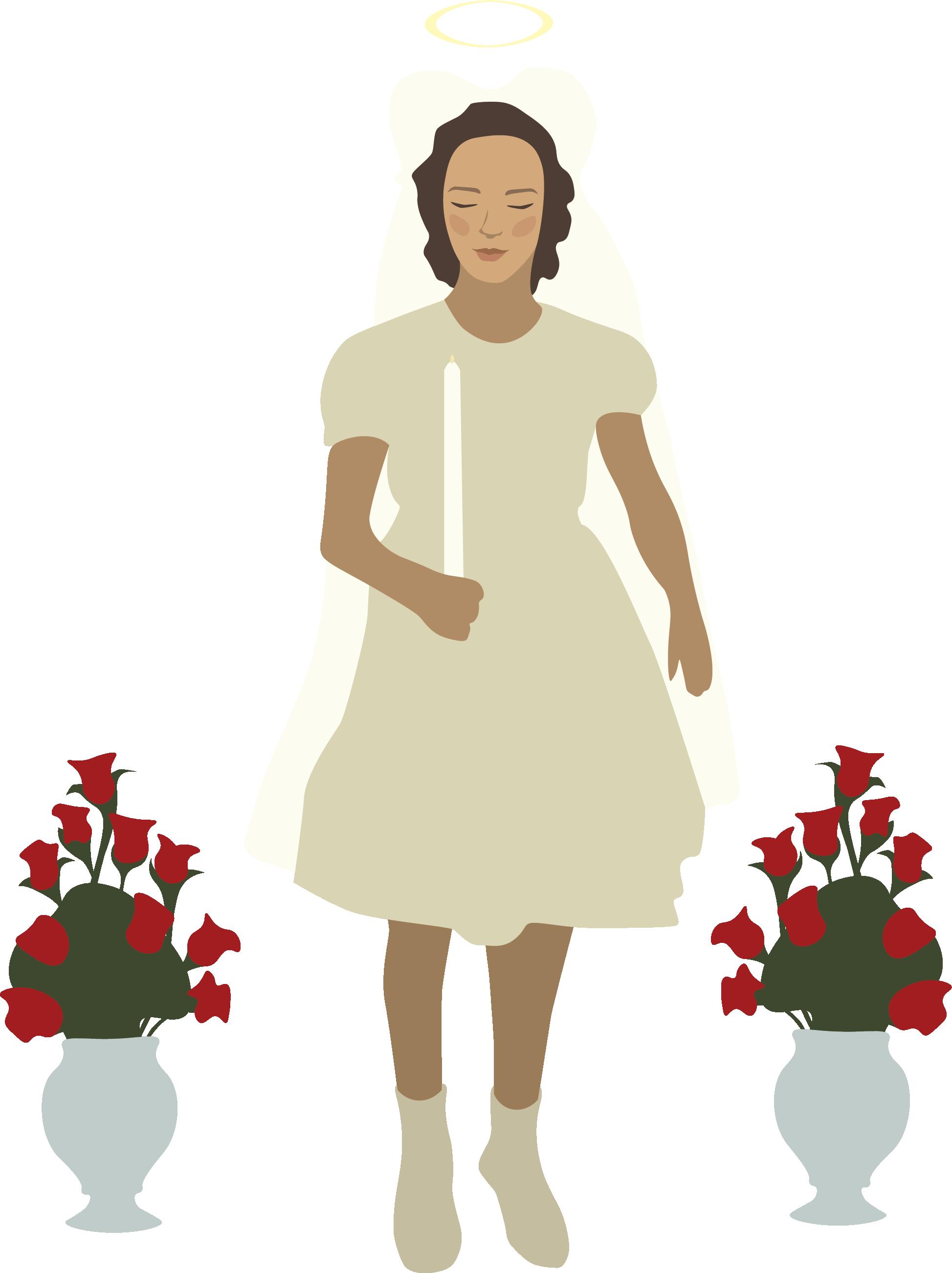
Bourque, Loyola’s interim executive director for student affairs. Richard’s impact goes beyond Louisiana, with her influence reaching as far as the Balkans, with moves to translate her prayer cards into Croatian, according to folklorist Marcia Gaudet.
See SAINT, page 5



CRIME MAP 2 | NEWS 3 | WORLDVIEW 5 | PUZZLES 7 | LIFE & TIMES 9 | SPORTS 13 | EDITORIAL 14 | OPINION 15 FIND US ONLINE AT LOYOLAMAROON.COM FB.COM/THELOYOLAMAROON @LOYOLA_MAROON @LOYOLA_MAROON THE MAROON Loyola University • New Orleans • Volume 101 • Issue 04 • February 17, 2023
Sophia Maxim/The Maroon
CHARLENE RICHARDS 1947 - 1959
STAFF


FRERET ST
ST. CHARLES AVE
CLAIBORNEAVE S. CARROLLTON AVE BROADWAY ST TULANE LOYOLA
NASHVILLE AVE JEFFERSON AVE
NAPOLEONAVE
CRIME MAP LEAKEAVE
MAGAZINE ST
Business Office/Advertising (504) 865-3536


Adviser’s Office (504) 865-3295


Executive Producer: Chloe Caudle
Assistant Editors: Anna Hummel, Maria Difelice, Nadir Benslimane, Kincaid Leger, Alana Thompson, Veronica Offner, Ella Michna

Lead Page Designer: Sophia Maxim
Distribution Manager: Abigail Schmidt
Digital Team: Hannah Bauer, Addison Laird, Dajah
Saul
Adviser: Michael Giusti
CONTACT US
Main Office (504) 865-3535
Correspondence maroon@loyno.edu
Letters to the editor letter@loyno.edu
Advertising ads@loyno.edu
Website www.loyolamaroon.com
Twitter @loyola_maroon
Facebook The Maroon
Instagram @loyola_maroon
Our office is in the Communications/Music Complex, Room 328.
Send mail to: The Maroon, Loyola University, Campus Box 64, 6363 St. Charles Ave., New Orleans, LA 70118
The Maroon is published every Friday. Unless otherwise noted, all content is copyrighted by The Maroon. All rights reserved. First copy free to students, faculty and staff. Every additional copy is $1.00. The Maroon is printed on 30 percent post-consumer recycled content.

THE MAROON February 17, 2023 2
PARKAUDUBON
Drug Violation Mercy Lot Feb. 8 5:10 p.m.
Mercy Lot Feb. 10 5:20 p.m. Motor Vehicle Theft 600 Cherokee St. Feb. 10 4:00 p.m.
Iggy Vols turn mission into action
Presidential search down to final four candidates
The Presidential Search Committee has narrowed their choices down to four “strong and diverse” candidates, according to an email sent by the chair of the Presidential Search Committee, Robert LeBlanc.
LeBlanc, wrote in the email sent on Tuesday, Feb. 14, that the finalists will visit New Orleans to be interviewed further, tour the campus, and meet with faculty and students.
The initial search brought in dozens of candidates, and since January, the committee has selected eight semi-finalists and conducted a round of interviews before deciding between the final four candidates.
“We are confident that this process will result in the hiring of a president eager to unite Loyola’s notable recent progress and bold plans for the future,” LeBlanc said.
Rachel Hoorman, Loyola’s vice president of marketing and communications, told The Maroon last year that the process would be kept confidential and updates about potential candidates would be limited. However, the university has confirmed that the Board of Trustees would have their final selection by late March.
Residential Life opens room selection process
The Director of Residential Life, Chris Rice, announced that room selection applications for upperclassmen in the 2023-2024 school year are now open in “The Housing Director.”
According to an email sent Monday afternoon, room selection applications are available for all juniors and seniors living on campus and will close March 10, 2023, at 5 p.m. While students need to apply early, the process of selecting a room will occur between March 20 and 29.
Sophomore students are now required to live on campus again. The housing exemption application for students who wish to live off campus will close on March 31, however Loyola’s Student Affairs page shows a March 12 deadline.
Rice’s email indicates a shift from last year's policy that required all junior and seniors who wanted to live on campus to compete in a lottery system for available housing. The lottery system requirement sparked backlash last year among upperclassmen who struggled to find housing in time for the new school year.
The email also stated Residential Life will be considering more changes to existing housing policies, like a standing requirement for all students who wish to dorm together to “completely fill certain housing options like the Francis Family 6th and 7th-floor apartments and certain Cabra apartments.”
Residential Life will also be suspending the existing squatting policy that allowed upperclassmen in Buddig and Francis Family hall to keep their current room.
For more information about the room selection process you may contact reslife@loyno.edu.
Students miss out on the "college experience"
By Maria DiFelice mldifeli@my.loyno.edu @maria_difelice
A recent report from Loyola’s University Faculty Senate noted that “many full-time students are working 30+ hours a week” and many of the students at Loyola were, on average, 15 years old when COVID-19 hit, missing out on “crucial years of in-person learning.”
Kele Johnson, a senior marketing major at Loyola, juggles 21 credit hours while working three jobs and being a member of the Loyola dance team. She said she barely stays on campus longer than she has to and finds it hard to keep up with her workload. Johnson also said she sometimes finds herself doing her schoolwork for other classes during her lectures.
“It sometimes feels like I have to be in more than one place at once, and I can't be,” Johnson said.
By Ava Acharya aaachary@my.loyno.edu @avaallene
Loyola’s Ignacio Volunteers, through partnerships with nonprofits and the Jesuit Social Research Institute, have organized the New Orleans Urban Immersion program this semester to educate students about social inequality regarding mass incarceration.
Students are in a “unique position” to advance meaningful change by seeking education and reform, said the executive director of JSRI, Annie Phoenix. Mass incarceration and criminal justice are relevant issues for much of the American public, and “due to the legacy of racism and white supremacy, Black and Brown communities are disproportionately impacted and targeted,” Phoenix said.
By offering students service immersion opportunities, the Ignacio Volunteers program turns Loyola’s Jesuit mission into tangible action, according to the program’s page on the school website.
The University Minister for Social Justice and Immersions, Jacob DeRusha, said that through this program, students will learn about the contributing factors and historical inequality that have led to mass incarceration.
The program includes weekly meetings and a trip in early April, where students will work with nonprofits in the field, visit the Louisiana State Penitentiary in Angola, LA, and visit the Orleans Parish Criminal District Court, DeRusha said.
DeRusha said the weekly meetings will cover topics like the school-to-prison pipeline, the history of slavery, the 13th Amendment, and the socioeconomic impacts of Hurricane Katrina.
According to Phoenix, seeing these issues firsthand will encourage students to seek meaningful and lasting solutions.
“We have big problems to solve in order to transform this system and reduce harm to our communities. We need every person to be involved and working for change,” she said.
Campbell Bryan, a Loyola public relations sophomore, participated in a previous Ignacio Volunteers program focused on immigration reform.
“It was one of the best experiences I have ever had,” she said.
Bryan said the program expanded her understanding of the issues surrounding immigration and deportation, as well as her personal privileges.
“At the end of the program, they asked us, ‘how are you going to take this home with you?’” Bryan said.
Following the program, Bryan said she began researching her hometown’s immigration policies and found non-profits in the area she could work with to continue addressing these issues.

Bryan said she plans to continue participating in Loyola’s Ignacio Volunteers Program into the next semester. She said mass incarceration is a cause she cares about deeply.
“I feel like programs should be in place because prison is a continuous cycle,” she said.
AI cheating threat real, but manageable
By Patrick Hamilton pthamilt@my.loyno.edu @patthamilton
University professors and administrators are scrambling to address the new challenges that artificial intelligence will pose as the technology rapidly develops and intersects with academia.
The software leading the charge in the consumer marketplace is an artificial intelligence chatbot called “ChatGPT” that has the power to draft complete original essays, solve complex math problems, and answer exam questions immediately. Chatbots are computer programs designed to simulate human conversations in a digital environment, and ChatGPT can generate human-like text for a multitude of applications.
ChatGPT poses a new challenge to professors who must now consider how it will affect academic assessment tools
like essays and multiple-choice exams. Director of the Canizaro Center for Catholic Studies and assistant professor of religious studies, father Nathan O'Halloran, S.J, said that he does not believe the essay is obsolete; however, he has begun pivoting to new testing strategies.
O’Halloran said that he has returned to using oral exams as one antidote to curb cheating. He noted that the trouble with ChatGPT is that even if a student evidently used the software, it's hard to prove. In the past, professors were able to discover cheating through plagiarism detectors like “Turnitin” that are installed on university networks, but ChatGPT has the power to circumvent detection by creating original text.
Roger White, the chair of the political science department, has been studying the development of AI closely for several years. White agrees that the value of essays will not be negated by the evolution
of AI technology. He said he’s keeping an open mind about where it may take us in the near future, in part, because he believes the essay will remain a powerful conduit for sharing ideas.
“I have students who don't speak in class. They just don't speak. And I have some that are going to be presented in a symposium. They have a lot to say. So the essay becomes a framework for minds to communicate with each other,” White said.
University administrators across the country fear that the use of ChatGPT may encourage students to avoid critical thinking and learning altogether.
“Thinking is arriving at judgments and then generating more questions and then arriving at new judgments and then generating more questions. And it's that process that is thinking,” O’Halloran said.
Johnson is not the only student who feels stretched too thin. Cristina Dabroski, a freshman economics major, said COVID-19 hit when she was a high school sophomore, forcing her and her peers to move to online learning. The transition from zoom classes in high school to in-person learning at Loyola wasn’t the easiest thing to do, Dabroski said.
Dabroski said she has found it harder to pay attention in class because she has to keep her focus the whole time, unlike when she was on Zoom, where she could clock out at any time.
“During Zoom, when you wanted to clock out, you could just sit back and do something else. As opposed to now you have to go to class [and] you have to look somewhat alive during your classes,” Dabroski said.

Patricia Murret, the associate director of public affairs, said Loyola is a tightknit community and is working hard to find out what students need. She said many students at Loyola missed out on crucial face-to-face experiences due to COVID-19, and they are working hard to help students transition back from online learning to in-person learning.
Loyola culture is created on the idea of education being used to develop the whole person: mind, body, and spirit, and Murret said they are looking for new ways to help support students like Dabroski and Johnson to succeed in their academic careers.
“We encourage all students to develop close relationships with faculty and to seek help when needed from their faculty, advisors, and the Student Success Center,” Murret said.
Despite the setbacks this year's freshman faced, Elizabeth Rainey, the executive director of the Pan-American Life Student Success Center and peers, said it's not all bad.
Rainey taught a first-year seminar course last semester and said her firstyear students were able to be more creative with their powerpoints. She also saw that her first-year students helped find support for each other.
“I thought students were more willing to support each other by sharing resources like counseling and academic accommodations. I think the pandemic opened up conversations about self-care and accessing resources,” Rainey said.
NEWS 3 February 17, 2023 THE MAROON
See CHATBOT, page 11
Senior Valeria Bermudez drives a tractor on the Ignacio Volunteers fall 2023 trip. The program will host another trip in early April. Courtesy of Jacob DeRusha.


MARDIGRASfor the MINDtm march 9 | 10 | 11 2023 THE NEW ORLEANS BOOK FESTIVAL will bring the world’s leading authors to TULANE UNIVERSITY’S uptown campus for a multi-day celebration! This FREE festival will provide an opportunity for authors and readers to interact with each other in one of the most vibrant and culturally diverse cities in the world. Be sure to join us for FAMILY DAY at the fest on SATURDAY, MARCH 11! Visit bookfest.tulane.edu for the 2023 author lineup and updates! bookfest.tulane.edu @nolabookfest Bookit!
SAINT: Louisianan Cajun could become a saint
Continued from page 1
Richard was said to have performed miracles both before and after she died at 12 years old of acute Lymphoblastic leukemia, a cancer that attacks your lymphoid line of blood cells. To this day, people frequently visit her grave for religious devotions.
“She almost became an influencer before social media,” Bourque said during a talk at Catholic Studies Night on Feb. 7.
According to Bourque, Cajun culture has tight-knit family communities, so word of Richard quickly spread and locals began devotions to her. Locals called her
the “little Cajun saint,” and would bring prayer cards and petitions to her grave.
“Her grave is still very heavily visited,” Bourque said. “Hundreds to thousands per year.”
In 1989, so many people were visiting Richard’s grave that lights were installed nearby for nightly visits, as well as petition boxes for visitors to drop their prayer cards in. On the 30th anniversary of her passing, 4,000 people attended an outdoor mass held at her gravesite, Bourque said.
60 years after Richard’s death, U.S. Catholic Bishop Douglas Deshotal opened the case for sainthood in Jan.
Xavier is partnering with Ochsner Health to bring this College of Medicine to fruition.
2020. A year later, there was a unanimous decision by the U.S. Conference of Catholic Bishops to advance the case to the Vatican. Cases for Richard are currently being compiled by an Argentinian postulator named Luis Fernando Escalante who will present a plea at the Vatican in the near future.
To become a saint, a candidate must have significant evidence of at least two miracles. Ultimately, the choice is up to the Pope, and there are two levels he could designate before sainthood: venerable and blessed.
New Orleans native and Loyola professor Jordan Jones said he was “thrilled”
that directly impacts me.”
to learn about Richard following his attendance of Bourque’s talk at Catholic Studies Night.
“It sounds like it would be super meaningful for the Cajun people in south Louisiana,” Jones said. “A saint from Louisiana would be really meaningful in that it can bolster the faith of all of us and point us closer to God.”
Additionally, he noted the lack of young saints, mentioning the blessing of Carlo Acutis, a 15-year-old also known for his cheerfulness before his death from Leukemia in 2006. Jones said that regardless of age, a young Louisianan saint could show that the Christian life is
possible.
Bourque said that before Richard’s passing, Richard asked her grandmother if she too could become a saint by praying like St. Teresa of Little Flower, a 24-yearold French saint who passed from tuberculosis. Richard was said to pray for the health and conversion of others, despite the pain and terminality of her illness.
“It doesn't matter how young you are, how much education you had, where you’re at in your life, you can still be a vessel for hope and peace,” Bourque said.
By Breanna Henry bmhenry@my.loyno.edu
Xavier University of Louisiana will soon become the first of historically Black colleges and universities in the state to have its own medical school, and the fifth in the nation.
181 students have been accepted into their medical school since 2020, according to Xavier’s website. There is no physical progress yet, as they are still in the planning stages before the school breaks ground.
Reynold Verret, President of Xavier, said at a press conference on Jan. 17 that
“The need for physicians of color is great,” Verret said. “Our purpose is to remedy prejudicial and inequitable structures in healthcare in the United States and abroad, and to embark on a journey that advances health equity for all the peoples of this nation.”
Verret also said that African Americans are only 5% of American physicians in the United States. Xavier aims to change that number.
Xaverites said they’re excited about what’s in the works. Kutemwa Masafwa, a sophomore chemistry at Xavier, said that creating a medical school would improve the quality of Xavier.
“I feel like knowing that we have a medical school will bring more attention to the undergrad side,” Masafwa said.
“This might lead to them improving our current courses, and since I am in STEM,
Masafwa said she loves her HBCU, and these operations make her even more proud to be a student at Xavier.
“Xavier is a school of excellence,” she said. “They’re not just going to make any medical school, they’re going to make it amazing to fit our reputation.”
Although some Xaverites are excited, other students are hesitant. Nasir Roberts, a junior biology pre-med major, said he and his peers are apprehensive.
“Xavier seems to struggle with managing the university as it already is, and students often suffer the most from the university’s poor management, an example being the network hack that happened last semester,” Roberts said. “I believe that the medical school is a good thing, and I hope that Xavier is able to properly manage the medical school so that it can provide opportunities to many aspiring Black doctors, but I am not sure if they will be able to handle running a medical school
in addition to the current colleges in the university.”
Despite his hesitation, Roberts said he expects the medical school will still benefit students.
“I hope that they tailor their medical program to prepare students for medical school in undergrad, so that way the transition will be more seamless,” Roberts said. “I am always happy to hear about more educational opportunities being provided to Black students, however, I am cautiously optimistic.”
Layla Vital, a sophomore biology pre-med major, said creating a medical school seemed like an obvious next step for Xavier.
“It’s kind of long overdue,” Vital said. “If we’re producing the most African Ameri-
can doctors from our school, we might as well have our own medical school.”
Vital also noted that Xavier is rapidly expanding and has all the resources students can take advantage of.
“I’m pretty sure my graduating class won’t be able to experience the medical school, which is kind of unfortunate, “ Vital said.
“But it’s kind of cool to see how future Xaverites will experience that.”
President Verret said Xavier’s medical school would impact generations to come, long after we’re gone.
“Together with this historic agreement, Xavier and Ochsner have heeded the call to advance the health of this state, the nation, and the world,” Verret said.
First all-Vietnamese krewe sets off
By Gabrielle Korein gfkorein@my.loyno.edu
One of the first all-Vietnamese krewes will hit the streets Lundi Gras day when Krewe of Mung Beans joins the Krewe of Dead Beans, a sub-krewe of Krewe of Red Beans, who pride themselves on being leaders in diversity, respect, and culturally appreciative floats and costuming.
Krewe of Mung Beans sets out to highlight and celebrate Vietnamese culture in New Orleans by tying in Vietnamese folklore and ghost stories with the spooky theme presented by Krewe of Dead Beans.
The idea behind the Krewe of Mung Beans was formulated by founder and captain Thuc Nguyen after she joined a local organization known as the Viet Krewe, a social group for Vietnamese people living and working in New Orleans.
“I didn’t even really think about putting one together,” Nguyen said about starting a krewe. “I wrote this article for New Orleans Magazine about Lunar New Year, and in the opening of that story, I commented how I have never noticed a Vietnamese-American krewe in Mardi Gras. Devin DeWulf from Krewe of Red Beans saw the article, and he reached out and welcomed us on board.”
Nguyen said although she has never seen an all-Asian krewe represented at Carnival before this year, she has been inspired by the work of other cultural krewes, such as the Krewe da Bhan Gras that rolled at Krewe with Boheme on Feb. 3.
Much like Nguyen, Krewe da Bhan Gras co-founder Monica Dhand said she started her krewe as a way to celebrate Asian culture and to provide a place for South Asian New Orleanians to honor their heritage authentically.
Similarly, Nguyen said part of the mission of Krewe of Mung Beans is to provide a place for Asian people to get involved in Carnival season who have not previously seen a place for themselves to genuinely celebrate their ethnic identity.
“There are sub-krewes for everything under the sun but no real ethnic representation by people that are born into it,” Nguyen said.
For krewe member Ami Truong, being part of Krewe of Mung Beans provides the opportunity to advocate for the often unrecognized contributions of Vietnamese people to the city. She said she also sees it as a way to dismantle harmful stereotypes about the Asian community that are prevalent during Carnival season.
Truong discussed the prevalence of cultural appropriation of Asian traditions in Carnival season, such as the Krewe de Fu, a kung-fu inspired krewe consisting of mostly white men dressed up as ninjas that rolled in Chewbacchus this year.
“Things like that are what we are striving to correct,” Truong said.
Truong said another goal as a member of Krewe of Mung Beans is to use throws as an opportunity to educate people about Vietnamese culture and dismantle harmful stereotypes.
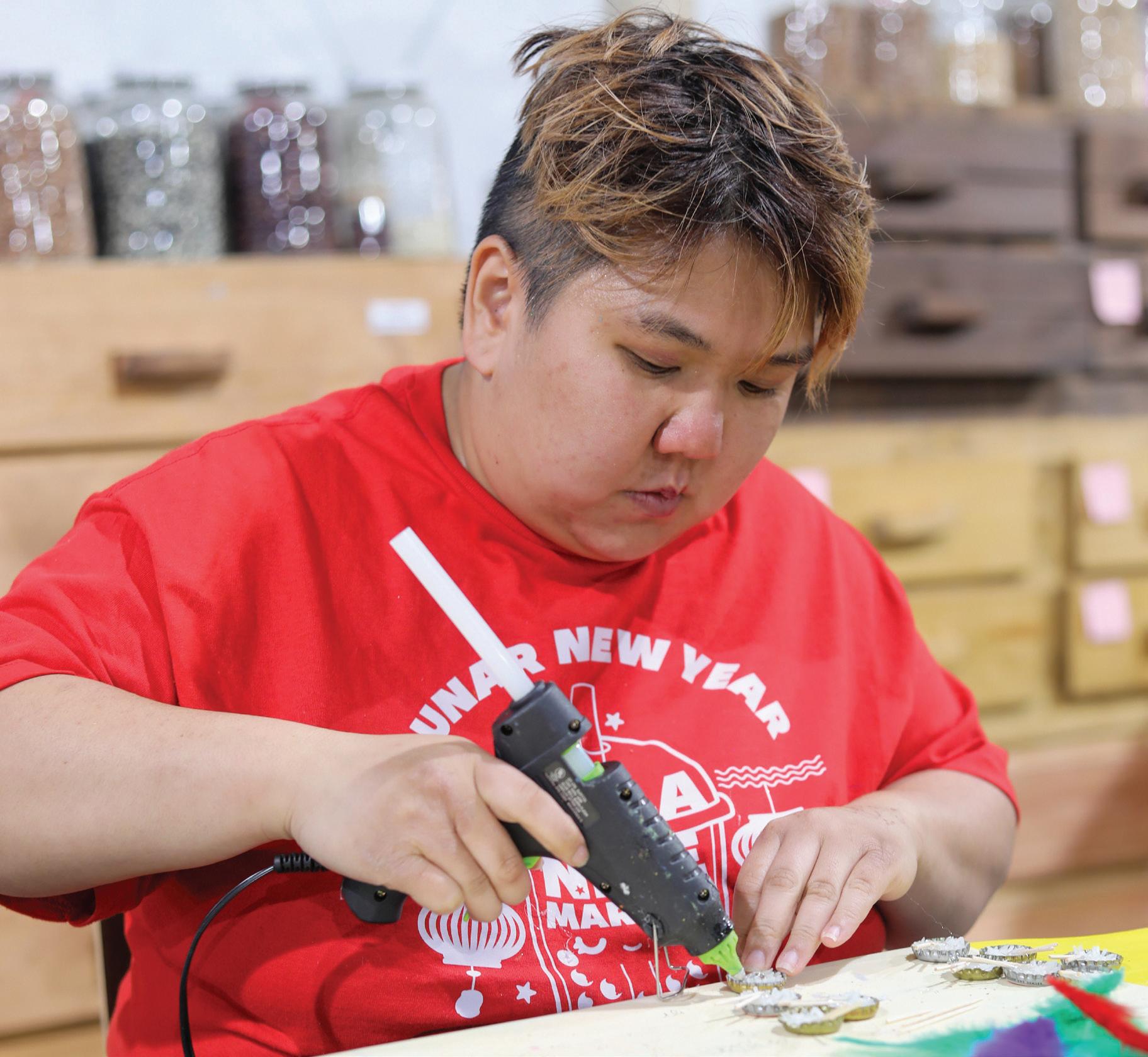
“I think with Mardi Gras being such a big part of the culture that is New Orleans and attracting so many tourists and different communities, having a chance to be on a platform like marching in a krewe is really groundbreaking for different groups of people,” Truong said.
Catch the Krewe of Mung Beans Monday, Feb. 20, during the Red Beans parade, at 2 p.m.
WORLDVIEW 5 February 17, 2023 THE MAROON
Krewe member Ami Truong glues together throws on Feb. 13 for Krewe of Mung Beans to give away on Lundi Gras. Krewe of Mung Beans has used hand-crafted throws to celebrate Vietnamese culture. Gabrielle Korein/The Maroon
Xavier to build first HBCU med school in LA
“The need for physicians of color is great.”
— Reynold Verret President of Xavier University

6 February 17, 2023 THE MAROON





PUZZLES 7 February 17, 2023 THE MAROON Across 1 Cut on a cutting board 5 Decorative or dental creation 10 Bestselling South Korean band 13 Duration of a massage, typically 14 Followed a doctor's instruction 16 Creature in fantasy stories 17 See 38-Down 18 As opposed to 19 Actress Long 20 Assessment 21 Highway or byway 22 Not banned 24 Flag holder 26 Dessert-shaping aid 28 "Without further __ ... " 30 "I just got it!" 32 Grains that aren't part of a healthy diet 33 Inspire fearlessness in 36 Spingarn Medal org. 39 Part of a process 40 Bucatini or capellini 42 Criticize 44 Studio Ghibli specialty 46 Start to have an effect 48 "¿Qué te __, calabaza?" 50 Like the main characters in "Fire Island" 51 "Help!" letters 52 Cheap jewelry material 56 Woman yelling at a cat, for one 58 NCAA basketball powerhouse 59 Basketball great Leslie 61 LSD 64 GPS stat 65 Familiarized with 67 Earned 68 "Gr8 joke!" 69 Turn indicator, e.g. 70 Squander, as cash 71 Spanish title: Abbr. 72 __ dish: biologist's container 73 Enemy's opposite Down 1 Talk a bit 2 Doughnut's middle 3 Very vocal 4 Prefix with type 5 "Uh, yeah, it better be!" 6 Prefix with tech 7 Purple flower 8 Nike competitor 9 Talk a lot 10 Afro-Cuban drum 11 Experiment 12 Heat to nearly boiling, as milk 15 Montana capital 23 Long punctuation mark 25 Experiment site 27 Native Hawaiians 28 Morning hrs. 29 Experiment results 31 __ carte menu 34 Emergency treatment for an allergic reaction 35 Setting not observed by Hawaii: Abbr. 37 "Phew!" 38 With 17-Across, Silicon Valley city 41 Word after price or phone 43 Hosp. personnel 45 Name that means "great" in Latin 47 Retina's place 49 Claim 52 Propane and ethanol 53 Cast member 54 Australian marsupial 55 "__ Cha Know?": Erykah Badu song 57 Fast snake 60 __ of David 62 Big celebrity 63 Description for hydrated skin 66 Quick drink For weekly puzzle answers, download The Loyola Maroon Mobile App Apple Store Google Play Club M O N T H L Y Cider I T ' S L I K E A W I N E C L U B B U T W I T H C I D E R & M E A D * F O U R F I L L S , F L I G H T S , O R M I X O F P E R M O N T H * 2 0 % O F F A L W A Y S * T A P 1 3 A C C E S S * Q U A R T E R L Y L A G N I A P P E $ 4 5 P E R M O N T H Y O U A R E I N V I T E D T O J O I N T O S I G N U P O R F O R M O R E I N F O R M A T I O N E M A I L : J O N @ B R O A D S T R E E T C I D E R . C O M M U S T B E 2 1 +

8 February 17, 2023 THE MAROON
Vocalist learns selflove through music
By Violet Bucaro vabucaro@my.loyno.edu
Loyola popular and commercial music senior and vocalist Rocky Leonard said music was one of the only ways she was able to recover after being in an unhealthy relationship, and learn that her "voice deserves to be heard."
“My creative process is very free and meditative. I am always inspired by things. I am always writing and jotting things down. I will sit down with my piano. I’ll come in with one idea, and it will completely change, which is good. It’s very open,” Leonard said.
Leonard said her goal is to increase opportunities for others to sing and feel safe.
Leonard began releasing her solo music in 2021.
“Putting out music has totally changed my perspective of myself,” she said. “I used to downplay who I was. Everyone else saw this big influential person, but I was just doing what I wanted to do. I learned to trust my voice and learned how influential I am.”
Having grown up with a religious background in Houston, Texas, Leonard said she is significantly influenced by gospel music.
Leonard explained how her mother was recording an album for their church while she was pregnant with her.
“It’s in my blood,” she said.
Leonard is a part of two groups at Loyola called Zahria Sims Collective and Medicinal Harmony.
Zahria Sims Collective started in Leonard’s first year after sharing a class with former Loyola music industry studies saxophonist Zahria Sims.
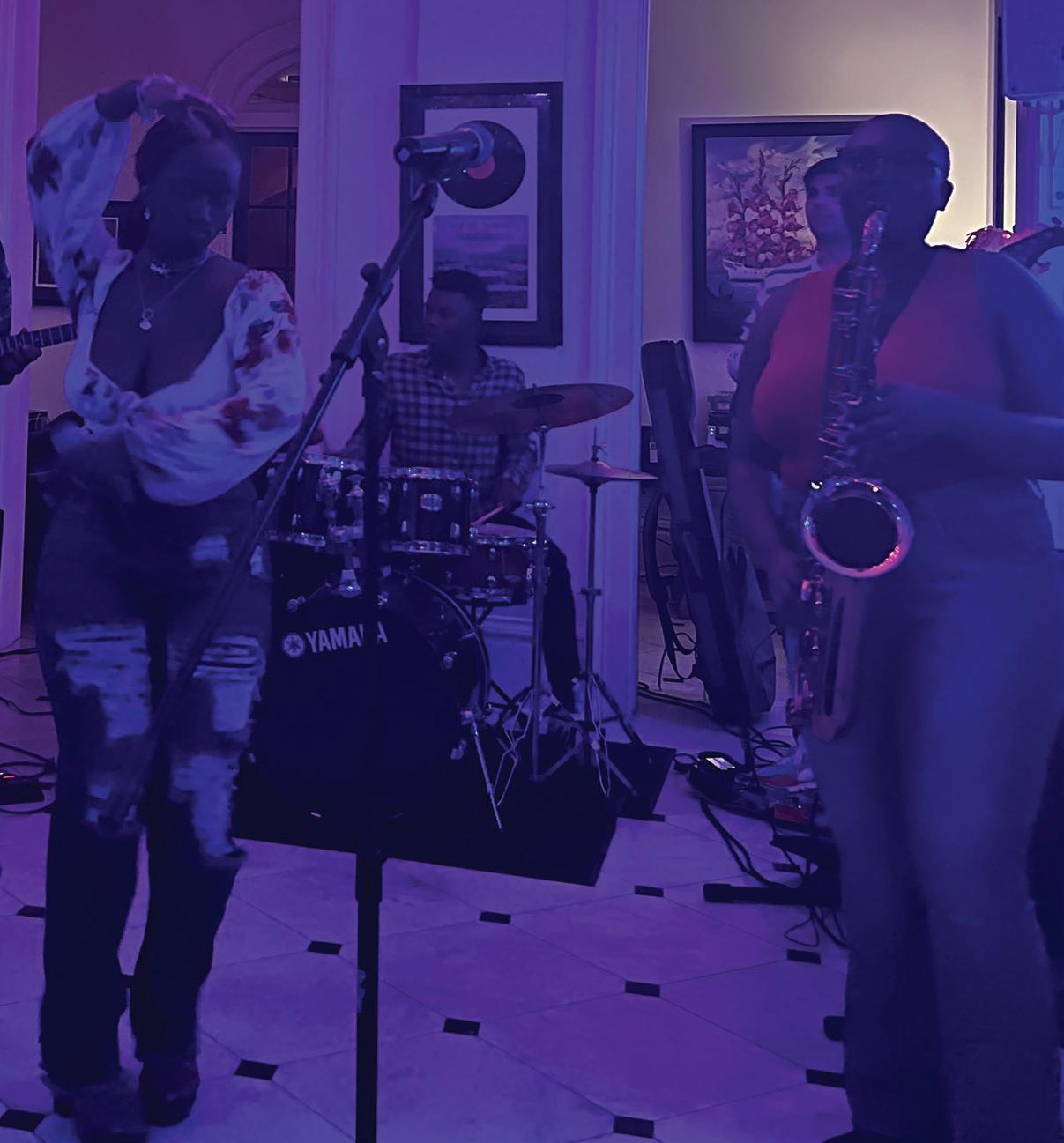
“The way we connected was unheard of and kind of random. I’m thankful for them,” Leonard said.
Leonard said Zahria Sims Collective’s music is inspired by indie-pop, neo-soul, and R&B. The collective often performs cover songs from artists such as Herbie Hancock and Carl Carlton, as well as original music.

Leonard said her other musical endeavor, Medicinal Harmony, has given her a safe place to heal.
The music collective is composed of “medicinal musicians in full alignment with highest purpose,” according to their website.
Professor of Vocal Artistry at Loyola and founder of Medicinal Harmony, Elizabeth Dellinger, or Saint Mercedes, said the collective is not an industry endeavor.
“It’s about healing, intentional co-creating, and embodying the highest beauty with our sound frequencies,” Mercedes said.
The collective formed amidst the return of in-person lessons, where Leonard said it was a “sacred” place to sing.
“During these private vocal lessons, transformative levels of expression were exchanged. I pulled everyone together in a room to form a therapeutic sing-yourwhole-face-out session,” Mercedes said.
The collective’s sound is “soulful, lush, multi-vibrational, healing,” according to
Mercedes.
Medicinal Harmony has performed at Essence Fest and has also accomplished a monthly residency at the Royal Frenchman Hotel.
“We are each artists with original projects. MH is a live, living performance offering rather than a recording project,” Mercedes said.
Leonard said the collective is not a permanent group of individuals, but that the musicians change fluidly.
“It’s a music family,” Leonard said.
Leonard said she hopes her music inspires people to begin their own self love journey.
“I think we glamorize self love and water it down to getting your nails done and dressing nice, but it’s much more. It’s self discipline. It’s setting hard boundaries with those you love,” Leonard said.
REVIEW: Emmy-award-winning Quinta Brunson shines in "Abbott Elementary"
By Victoria Hardy vmhardy@my.loyno.edu
Quinta Brunson upheld the caliber of her pilot episode, which won her an Emmy Award in 2022, and graced Abbott Elementary fans with a second season of comedic realness.
The Hulu series entertains its viewers with the hilarious ups and downs of teaching elementary school in an underfunded elementary school in Philadelphia. Janine, played by Brunson, tirelessly works to better her students’ experiences with positivity that is almost toxic.
Her coworkers break the fourth wall with glances and comments to the cam-
era about their annoyance with Janine, bringing a “The Office” or “Parks and Recreation” feel to a public school setting.
In contrast to season one, season two further develops the personalities of its characters and brings us outside of the classroom, unlike season one. The audience was able to imagine themselves more deeply in the shoes of each character thanks to a visit to Melissa’s home and a run-in between Janine, Gregory, and Ava at a hookah lounge.
Ava, Abbott’s dry-humored principal, introduces us to the classroom in a new way when she substitutes for Janine. What makes Ava such a humorous character is her way of being the most while
doing the least. She’s happiest as the center of attention, but avoids doing real work at all costs. As Janine’s sub, she realizes the amount of hard work that her teachers put in for their students.
Leslie Odom Jr., known for his role in the broadway musical “Hamilton,” made a surprise cameo in two episodes centered around a hate ad about Abbott Elementary. He played the ad’s perpetrator and the principal of Abbott’s opposing charter school, which had better funding and resources for students.
Brunson’s ability to evoke giggles and lightheartedness out of serious issues within the American school system makes the show so binge worthy. We see students with immigrant parents who
are weary of testing their children for learning differences, underpaid teachers, understaffing, etc.
Tyler James Williams, who many of us remember as the star of “Everybody Hates Chris,” plays Gregory. Chris’s elementary school was a primary setting in the early 2000s show, creating a sense of nostalgia for today’s "Abbott Elementary" viewers.
Gregory grudgingly teaches alongside Janine because he secretly applied for the principal position, which he was denied from. His and Janine’s will-they or won’t-they relationship keeps viewers wanting more. They seem to have met their awkward match, which is the very roadblock keeping them from getting
together.
Each episode of "Abbott Elementary" slowly unfolds the lives of Brunson’s characters. We learn what makes them happy and what makes them tick, and the ticks are usually what make us laugh the most.
With only 22-minute episodes, new viewers of "Abbott Elementary" are sure to make a dent in the show within a few, short weeks. If you are looking for something that feels like company after a long day, press play on Abbott.
Rate: 10/10
LIFE & TIMES 9 February 17, 2023 THE MAROON Film • Arts • Food • Music • Leisure • Nightlife
Rocky Leonard (left) sings with saxophonist Zahria Sims (right) at the Royal Frenchman Hotel on Feb. 9. The band has regular shows there. Violet Bucaro/The Maroon

10 February 17, 2023 THE MAROON
CHATBOT: Universities wrestle with artificial intelligence
“When it comes to living in the world, I have to make judgments constantly, and I will not know the difference between a good judgment and bad judgment or an authentic judgment or a prudent judgment or virtuous judgment if I've just abdicated the judgment making process all through college. The judgment-making process is the purpose of education.”
Using AI to complete coursework is incongruous with Loyola’s mission to pursue truth and wisdom, according to O’Halloran. He said he feels a personal responsibility to educate his students and hold true to the “Jesuit mission of educating the whole person.”

While AI might be able to offer guidance on appropriate judgments to make on subject matters or how to navigate certain situations, O’Halloran said there’s no guarantee it would be a virtuous decision because it’s an aggregated decision made on the basis of a majority. But the majority does not necessarily make the best decisions.

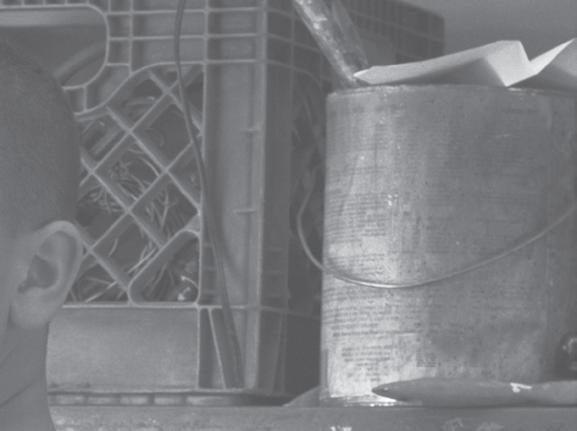
According to a University Faculty Senate report from last month, there was a discussion on how Loyola should respond to the development of ChatGPT and what stance should be taken on AI in the community. While neither O'Halloran nor White have heard anything from the administration yet, Patricia Murret, the associate director of public affairs, said the university is taking active steps to address the misuse of AI software.
Murret said Loyola held a workshop earlier this month to show professors what ChatGPT looks like and several tools that can be used to identify AI-generated work. She also said the university is working with Turnitin to install detec
tion systems in campus software.
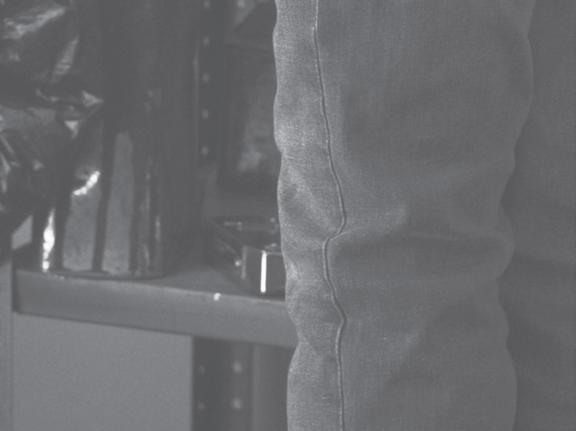







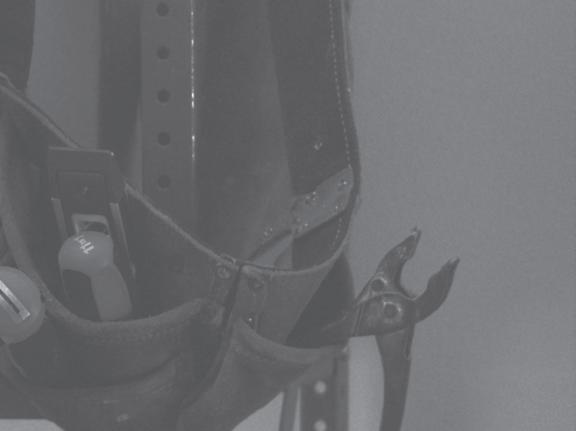
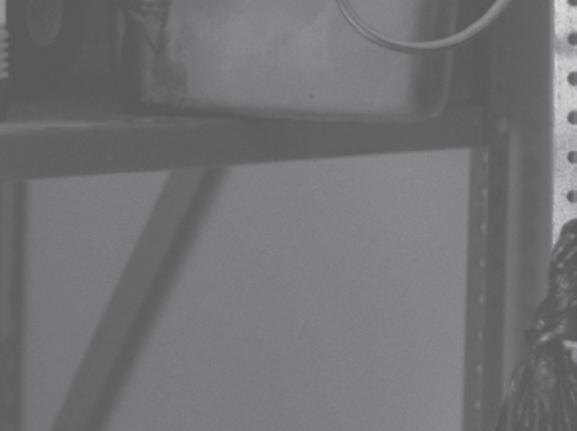

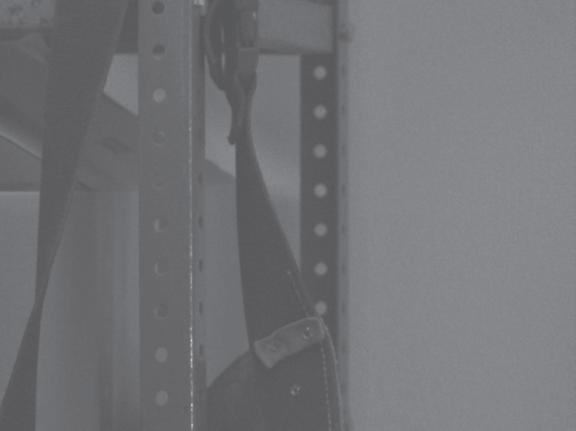
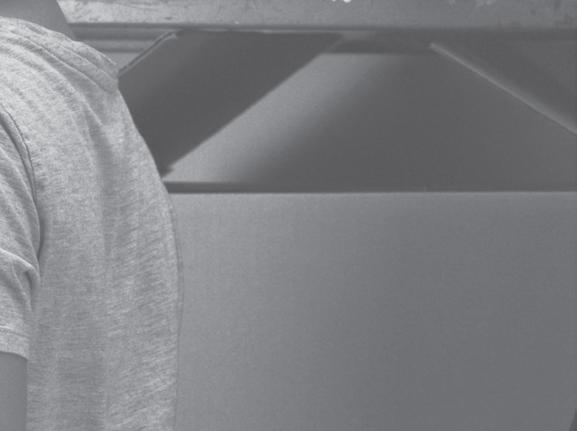


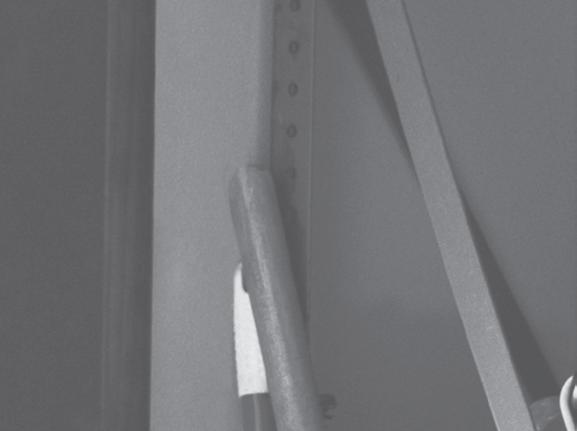
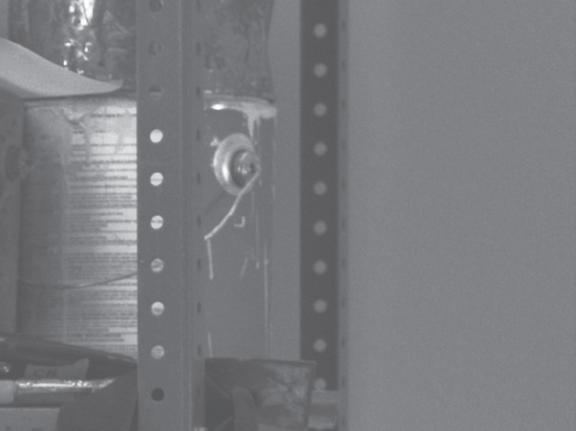


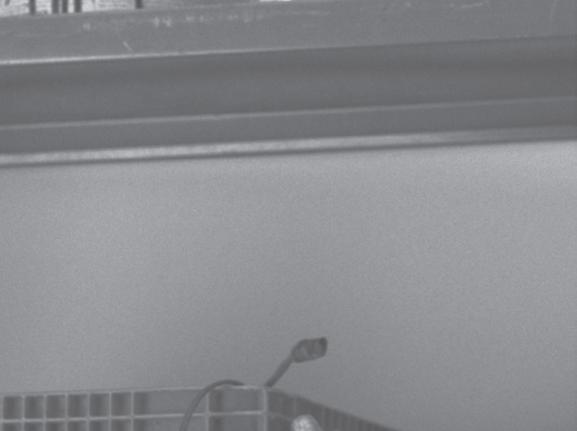
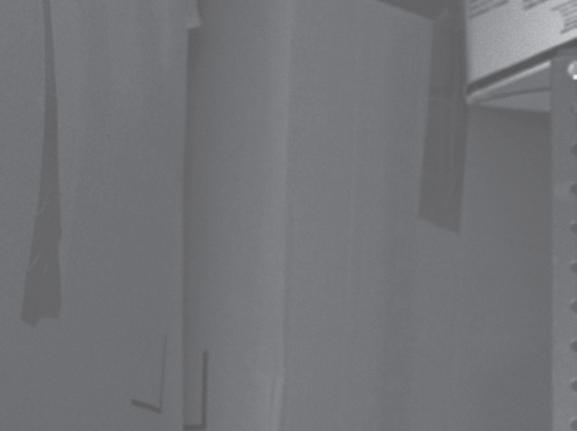

Murret said that using AI to complete classwork is a violation of the academic honor code, which prohibits students from “engaging in plagiarism, and the use of ChatGPT would be considered as such because the work of others is being used as one’s own.”
White argued that ChatGPT or not, students are given a great deal of trust, and they are expected to reciprocate with honesty.

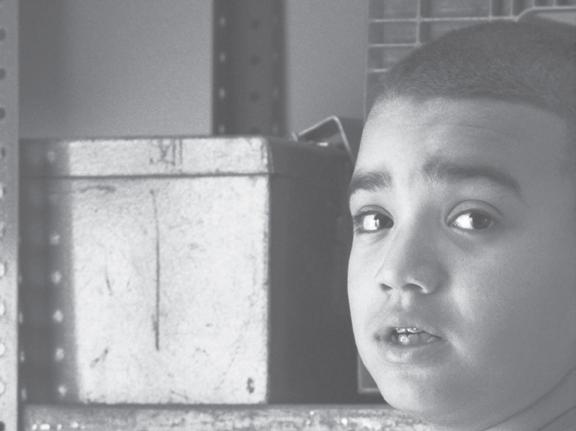
“Most successful interactions between people are based around trust. Stop and think about it. Would you do business with people you didn’t trust?” White said. "To the extent that people are dishonest, the person they’re harming over the long term is themselves.”
Both O’Halloran and White expressed concern about the misuse of AI. O’Halloran said, “it will raise all kinds of moral questions and moral dilemmas about how it's programmed to act and override human reasoning and things like that.”
“Consciousness is required for empathy, and you can't actually empathize with somebody if you're not conscious. So, if you can crank procedures and operations unconsciously without empathy, and that becomes faster and stronger than us, that could be a problem.”
White said.
White also urged students to pay attention to how AI merges with other technologies in the near future, like brain-computer interfaces. Brain-computer interfaces are systems that can capture brain activity and translate them into commands for prosthetic limbs, computer cursors, and other robotic devices, for example. But the capabilities of brain-computer interfaces are still most

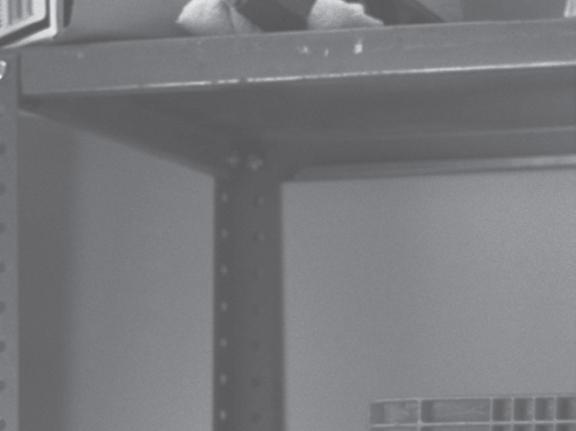
White said the idea of a full brain-computer interface would mean we are still human beings, we would still maintain our human thoughts and feelings, but we would be able to access the web directly using our brains.

“Imagine what that could do for mid terms and finals,” White said.
White and other professors across
the country are optimistic about what potential AI may have as a tool for educators in the future. Not all signs of the rapid AI development are negative, but as it exponentially develops, universities across the country will have to create new monitoring systems to patch holes left by this largely undiscovered technology. And Microsoft's recent $10
billion investment in ChatGPT indicates a potential internet renaissance on the horizon.

“There’s no other time I’d rather live than right now,” White said.

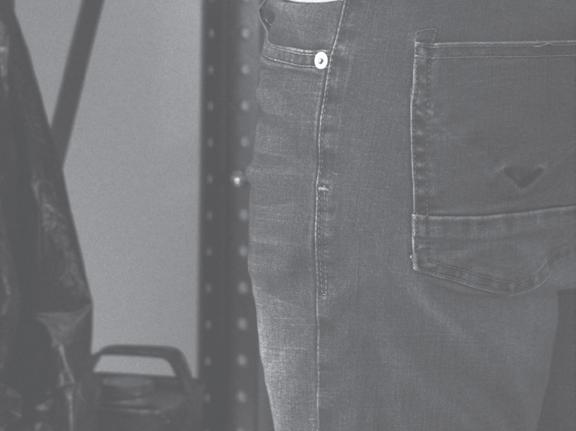
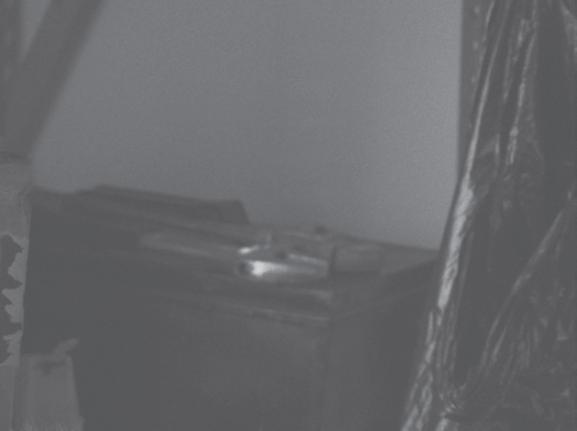
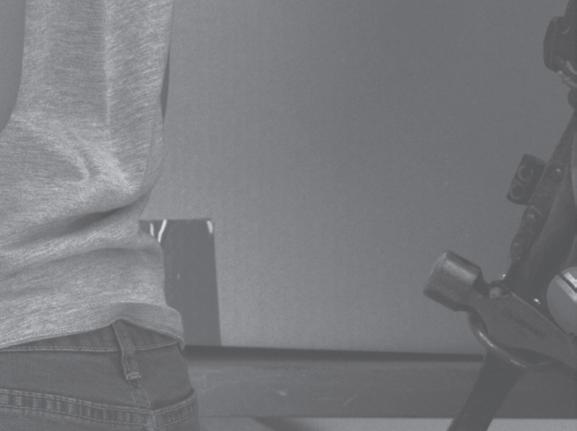

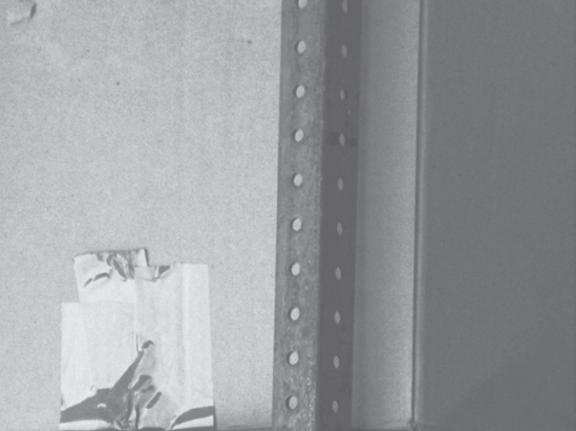
11 February 17, 2023 THE MAROON
Continued from page 3
8
by
FAMILY FIRE is a shooting involving an improperly stored gun, often found in the home. ENDFAMILYFIRE.org
Microsoft employee Alex Buscher demonstrates a search feature integration of Microsoft Bing search engine and Edge browser with OpenAI. Microsoft has invested billions into the artificial intelligence chatbots in recent months. AP Photo/Stephen Brashear
kids a day are accidentally killed or injured
FAMILY FIRE.
12 February 17, 2023 THE MAROON Presented by: Dozens of schools expected to be hiring. Bring multiple copies of your resume. Charter School 17th Annual Attn: Teachers! Certified teachers and teachers working on their certification: full and part-time positions available in Louisiana Charter Schools! All degreed school professionals can attend (teachers, nurses, counselors, coaches, administrators, etc.) Check vacancies now! Updated vacancies are posted year-round. Post your resume and contact School Principals. Sat., March 4, 2023 9 a.m. to 1 p.m. Hynes Charter School 990 Harrison Ave., New Orleans, LA 70124 Register at www.gnocollaborative.com!
Loyola reexamines athlete safety protocols
More renovation to come for Sports Complex pool
By Alana Thompson anthomps@my.loyno.edu
The pool in the Sports Complex will be closed due to replacing the fiberglass lining starting on March 1, according to an email sent from University Sports Complex Coordinator Andrew Fava.
The two-month-long renovations are part of a larger effort to restore the pool after the damage it sustained during Hurricane Ida in the fall of 2021. After a year out of commission, the pool was reopened with renovations following hurricane damage in the fall of 2022.
This new round of renovations was planned for March to minimize disruption, according to Fava.
“From a usage perspective, it is the most advantageous time of the year to complete this work,” Fava said.
WHAT YOU MISSED
Women's basketball victory vs Spring Hill
The women's basketball team won their 28th straight game in the Den and have a 24-1 record this season. They play again on Feb. 18 for the regular season finale against Life University.
Men's golf competes at Steve Hodges Classic
By Abigail Schmidt acschmid@my.loyno.edu @abschmidtnews
Sports medicine has been a hot-button issue lately, and Loyola’s medical teams have their own plans in place to ensure safety on and off the court.

Several schools and sports organizations across the country have recently implemented stronger safety procedures since NFL player Damar Hamlin suffered a cardiac arrest and was revived on the field by an emergency response team.
Because of this quick emergency response, Hamlin is going to be able to play football again, according to the New York Times.
This situation has sparked a rise in safety precautions in several fields, especially sports. Numerous universities and high schools are putting plans in
place to ensure that their emergency response is as quick as possible, according to WNEM.com.
“Practicing/reviewing the emergency action plan and communicating that plan to all staff is very important in ensuring proper care during emergencies in athletics, which can happen at any given moment,” said Loyola athletic director Brett Simpson.

Loyola works with athletic trainers through Ochsner Sports Medicine, according to Simpson. They are all trained in CPR and using automotive extended defibrillators, or AEDs.
Two of these are located in the University Sports Complex, Simpson said. One is behind the check-in area of the lobby, and the other is located by the door of the athletic training room near the back courts. The medical staff is also trained in these and are present at all sporting events.
“In addition, they are skilled in providing emergency care for heart-related illness, c-spine injuries, athletic injuries, heat emergencies, etc., as outlined by the Louisiana State Board of Medical Examiners and the National Board of Athletic Trainers,” Simpson said.
—
Patricia Murrett, associate director of public affairs at Loyola, said that following the Hamlin incident, the university conducted an internal review of its policies and procedures with the sports medicine staff, emphasizing emergency preparedness, continuous training, and best practices.
She added that Dr. David Leslie, the school’s physician, and a team doctor for
the New Orleans Saints, was included in the review
“We are always seeking to be prepared and to improve,” Murret said.
In September, Loyola’s athletic department conducted an annual meeting where they completed an “emergency action plan” in which medical staff and coaches came together to practice what to do in emergencies that may arise during a sporting activity, Murret said.
Loyola also has a complete set of procedures listed on their website in the case of emergencies, in which one would first call LUPD, then local emergency services.
Dance competes at Battle of the Big Easy
By Arianna D'Antonio asdanton@my.loyno.edu @AriDantonio
Loyola’s dance team is getting into the competition groove again for their new season.
The team performed at the Battle in the Big Easy competition last weekend at Xavier University of Louisiana. The team competed over two days and scored 61.95 in the dance duels and 65.13 in the dance group competition.
“It was so fun getting to compete with
my team again,” said business marketing senior Kele Johnson.
“I am so grateful to have made the competition team this year and been able to dance beside some of my closest friends.”
The competition was the first for the Wolf Pack this season, and they competed against five other schools.
The Wolf Pack will be hosting their
next two competitions in the Den next week, with the Wolf Pack Invitational taking place on Feb. 24 and the National Association of Intercollegiate Athletics Qualifying Competition on Feb. 25.
Psychology freshman Jayden Jackson said she is grateful for the opportunity to continue dancing and making memories with friends.
“Even though I haven’t known some of the girls on the team very long, they’re very supportive and uplifting,” Jackson said. “I am looking forward to just the growth of the team. Each time we compete, we get better and stronger.”
The team is looking to qualify for the NAIA national competition, which will be held March 10-11 in Ypsilanti, Mich.
“We haven’t been to nationals since my first year on the team so it would be rewarding to have that experience again, especially since this is my senior year,” Johnson said.
The men's golf team sent five athletes to the Steve Hodges Classic in Mobile, Ala. and placed third, one stroke off of first place.
WHAT'S UP NEXT
SATURDAY, FEBRUARY 18TH
Beach volleyball vs Berry College (Ga) in Montgomery, Ala. @ 8a.m.
Women's basketball vs. Life University @ 12p.m.
Men's basketball vs. Life University @ 2p.m.
Baseball @ #8 St. Thomas University (Fla.) @ 2p.m.
SUNDAY, FEBRUARY 19TH
Baseball @ #8 St. Thomas University (Fla.) @ 1 p.m.
SPORTS 13 February 17, 2023 THE MAROON
Photo Illustration by Gabrielle Korein
“We are always seeking to be prepared and to improve.”
Patricia Murrett Associate Director of Public Affairs
“Each time we compete, we get better and stronger.”
— Jayden Jackson Freshman psychology student
HOWLS & GROWLS
HOWL to Mardi Gras
GROWL to Mardi Gras traffic
HOWL to growling
GROWL to severe weather
HOWL to Bjork
GROWL to deregulation
HOWL to Wine Wednesday
GROWL to Investigating Nature
EDITORIAL BOARD
Macie Batson & Jackie Galli
Plantations aren't tourist attractions
Picture this: You’re standing by the Danna Center post office, perusing through the rows of tourist brochures, awaiting your next New Orleans outing. Images of Audubon Park, Jackson Square, and Bourbon Street dance across the covers of dozens of tri-fold pamphlets, inviting you to the “best places to be in the ‘Big Easy.’”
But in between brochures of New Orleans decadence are brochures that feature “beautiful mansions and grounds that deserve to be explored.”
These “beautiful mansions” sit atop soil sowed by slavery. These beautiful grounds’ roots are buried in the brutal treatment of many Black people. These preserved plantations that fail to preserve history are nothing more than thinly-veiled tourist attractions.
Plantations deserve more than to just be explored. Their history, and the history of Black Americans, deserves to be acknowledged for what it is.
Black culture is a vital part of the culture and history of New Orleans and failing to acknowledge that only further erases their history.
Plantation tourism has become a commodity for onlookers to “ooh” and “ahh” while passively dismissing the pain and suffering that permeates the ground they’re walking on.
Plantation tourism should not be used as entertainment but for education.
Many Black people live with the trauma of their ancestors every day, while the site of this trauma acts as a stoic venue for graduation pictures and wedding ceremonies.
The sites of Black people’s trauma and suffering are not a place for holy matrimony. They are not a backdrop for your accomplishments.
NewOrleans.com, the city’s leading tourist site, says Antebellum plantations “hark back to the days when cotton was king, and there were more millionaires in New Orleans than any other American city,” which only propels the erasure of Black history by failing to include that these millionaires were white. Their wealth was gained from trading slaves, as New Orleans was one of the biggest slave trading hubs in the 19th century. Furthermore, there can simply be no mention of the economic importance of cotton production without mentioning the Black people who were forced to produce it.
Yet, NewOrleans.com conveniently fails to mention that.
Antebellum plantations are a “window into a bygone past,” according to the site.
But this past isn’t far gone. This past still exists today.
While modern-day American slavery isn’t identical to the transatlantic slave trade, Black people are still suffering at the hands of the majority. From mass incarceration to police brutality, Black people are still enslaved by systemic and societal oppression.
Even with the past still intertwined with our present, we fail to do better.
Plantation tourism is merely one example of this.
While plantations in Louisiana, like Whitney Plantation and Laura Plantation: Louisiana’s Creole Heritage Site, have made strides to reevaluate plantation tourism by becoming sites that tell the story of plantations from the perspective of enslaved people, there are still many plantations advertised across the city that gloss over the deep history of slavery.
And many of these plantations have
undergone renovations that further erase the harsh realities of slavery and paint a false narrative of what plantation life would’ve been like.
But people see what they want to see.
What happened on these plantations is no secret to anyone, but many choose to blindly follow the false narrative sold to them by those who profit from their tourism.
That’s not okay. Especially from people living in a city whose culture was largely fostered by Black people. As a country, we need to do better. But as the city of New Orleans, which was central to the U.S. slave trade, it is all the more imperative to do better.
Antebellum houses shouldn’t be torn down or abolished, but their purpose should be about educating tourists and locals alike about the complex histories of slavery, not showboating them as fancy houses with no regard for the history that haunts them.
And while plantation tourism isn’t going to change overnight, as tourists and visitors, we can choose the places we visit and how we look at them.
You can choose to visit plantations that perpetuate a white, “Gone With the Wind” narrative, or you can choose to visit Whitney Plantation, which has become a nonprofit organization run by a predominantly African-American board whose mission is to educate.
You can choose to take your upcoming graduation photos on the steps of a plantation house, or you can choose to recognize the inhumane acts of history that haunt not only the walls of these “beautiful” mansions but the Black people whose ancestors endured them.
The choice is yours.
Editors-in-Chief
Cristo Dulom Managing Editor for Print
Ava Acharya Managing Editor for Digital
Devin Cruice News Director
Maleigh Crespo Design Chief
Gabrielle Korein Photo Editor
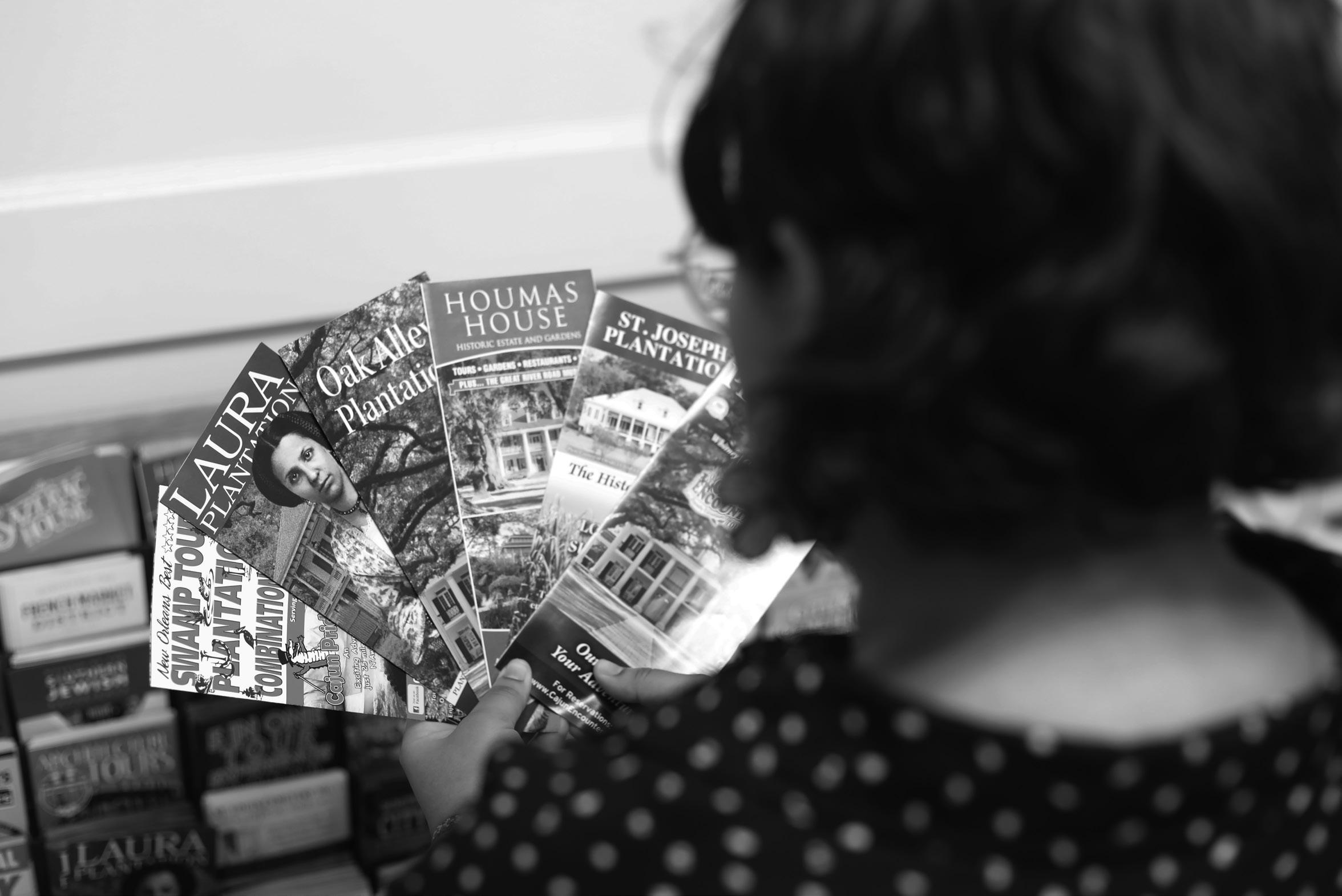
Patrick Hamilton News Editor
Abigail Schmidt Life & Times Editor
Aron Boehle Worldview Editor
Matthew Richards Sports Editor
Mark Michel Opinion & Editorial Editor
Kloe Witt Breaking News Editor
Mia Oliva Reviews Editor Equity & Inclusion Officers
Victoria Hardy & Melody Newsome
Arianna D'Antonio Senior Staff Writer
Torrie Shuff Senior Staff Photographer Copy Editors
Heather Rabassa & Violet Bucaro
Bella Kelley Social Media Coordinator
Alexis Horton Assignment Editor
EDITORIAL POLICY
The editorial on this page represents the majority opinions of The Maroon’s editorial board and does not necessarily reflect the opinions of Loyola University.
Letters and columns reflect the opinions of the authors and not necessarily those of The Maroon’s editorial board.
The Maroon does not represent the opinion of administration, staff and/or faculty members of Loyola.
Letters are subject to editing for length, grammar and style. Please limit submissions to 400 words. Submissions are due no later than 4 p.m. the Sunday before publication.
Please send all submissions — The Maroon, 6363 St. Charles Ave., Box 64, New Orleans, LA 70118.
Email us your letters — letter@ loyno.edu.
Submissions may also be made online at www.loyolamaroon.com.
EDITORIAL February 17, 2023 THE MAROON 14
Photo illustration by Gabrielle Korein
Latinx studies matter
 PABLO ZAVALA Assistant Professor of Spanish and Latin American studies pmzavala@loyno.edu
PABLO ZAVALA Assistant Professor of Spanish and Latin American studies pmzavala@loyno.edu
This semester, I’m teaching a class I never took as an undergraduate, but wish I had: Latinx Experiences Through Literature. We are reading about how Dolores Huerta and César Chávez fought for workers’ rights in the struggle against the powerful agricultural industry in 1960s California. This movement gave us a model for how to strike, boycott, and unionize successfully, and Robert F. Kennedy supported them.
I went to a public high school and college in Texas in the late 1990s and early 2000s (I know, showing my age), and despite the heavy Hispanic demographic, not once did anyone mention their names. That is a disservice at best and intentional at worst.
In an effort to render this silenced part of the U.S. past more audible, here at Loyola, we have modified the name of our program to Latin American and Latinx Studies (LAXS). The move reflects our broader commitment to thinking critically through intersectionality and empowering individuals who have a Hispanic background.
Across U.S. academia, Latinx studies have been a burgeoning interdisciplinary field of scholarship. Harvard University recently taught “Queer Latinx Borderlands,” and Marquette University – our sister Jesuit university – has a minor in it.
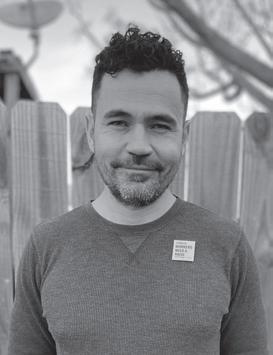
So, what is it? Latinx studies examine the intersections of Latinx experiences –such as immigration, language, and discrimination – with identities including class, gender, race, sexual orientation, and religion. For instance, maybe you were born here, but go back yearly to visit your family in Honduras. Or perhaps you came here when you were a teenager, and you speak Spanish at home and English at school.
Either way, although there are myriad cultures and languages south of the U.S., Latinx refers to folks with direct or indirect ties to Latin America and the
Caribbean.
The term “Latinx” itself is a gender, sexual, and racial-inclusive term that incorporates interconnected identities while rejecting patriarchal assumptions and the gender binary. It is true that it can be a bit awkward to pronounce (is it “Látinx” or “Latínx”?), and older gen

Animation deserves to be a respected medium
ADDISON LAIRD Digital filmmaking sophomore allaird@my.loyno.edu
Guillermo del Toro remarked after the premiere of his 2022 Netflix film, “Pinocchio” that Hollywood does not see animation as cinema. I have always found this notion surprising. For me, some of the most heartfelt and beautiful filmmaking has come from animation. Animation is an art form that has always been best at bringing the imaginative fantasies of filmmakers to life, all while telling profound stories with lovable characters.
Del Toro is correct in saying Hollywood does not see animation as cinema. Look no further than the Academy Awards, where only three animated fea-
ture films have ever been nominated for Best Picture. Animation should be held in the same esteem as live-action proj ects. It is beautiful, inventive, and most definitely cinema.
Animation is simply a method of ma nipulating still images to depict motion.

It is a medium through which stories are told. Despite this, many still see the me dium as a genre strictly for children and families or for cruder adult animation.
But that’s not all the genre is capable of. Wes Anderson’s “Fantastic Mr. Fox” is an example of an excellent animated film. It follows the story of Mr. Fox as he fights for his family, home, and marriage. Its humor and themes are mature while still maintaining a PG rating. This makes experiencing the film enjoyable for ev eryone, regardless of age. Other exam ples include Pixar’s “The Incredibles” and Studio Ghibli’s “Spirited Away.” These films are loved across all ages because of their artistry and storytelling. They do not cater to an adult or child audience; they simply exist for anyone to enjoy.
OPINION 15 February 17, 2023 THE MAROON



Full page color - 10.5w x 14h.pdf 1 2/18/22 11:10 AM



































































 PABLO ZAVALA Assistant Professor of Spanish and Latin American studies pmzavala@loyno.edu
PABLO ZAVALA Assistant Professor of Spanish and Latin American studies pmzavala@loyno.edu





